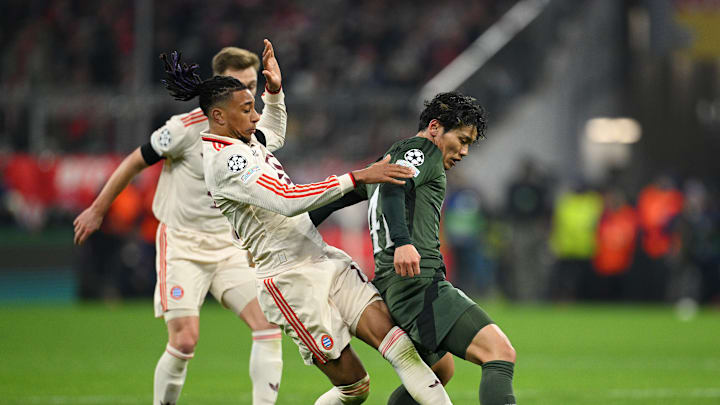Bayern Munich booked their spot in the round of 16 of the Champions League by beating Celtic 3-2 on aggregate. They were heavy favourites going into this tie, but performances over the two legs were far from convincing. Let's look at where Bayern struggled tactically against the Scottish champions at Allianz Arena.
The Build-up Structure
The way Vincent Kompany sets up Bayern is quite common in possession-based football. One of the center midfielder duo, Joshua Kimmich or Leon Goretzka, drops back to create a three-at-the-back formation. Their jobs are to read the situation and spray line-breaking passes. At the same time, the full-backs invade the half-spaces between the opponent's full-back and center-back to create numerical advantages upfront. This tactic leaves only one midfielder (sometimes none) at the center of the field, which calls for the flexibility of the likes of Jamal Musiala and Harry Kane to drop deeper and dribble up the pitch.
In short, there are two main routes to advance the ball: direct passes from the trio at the back and progressive dribbles from attackers dropping back.
The pros: once Bayern breaks the first line of pressure, they will likely have an extra man in the attack, which increases the scoring probability. However, if the ball is lost, that numerical advantage on attack can come back to bite them on the counter. And that was exactly what Brendan Rodgers sent his team out to do.
